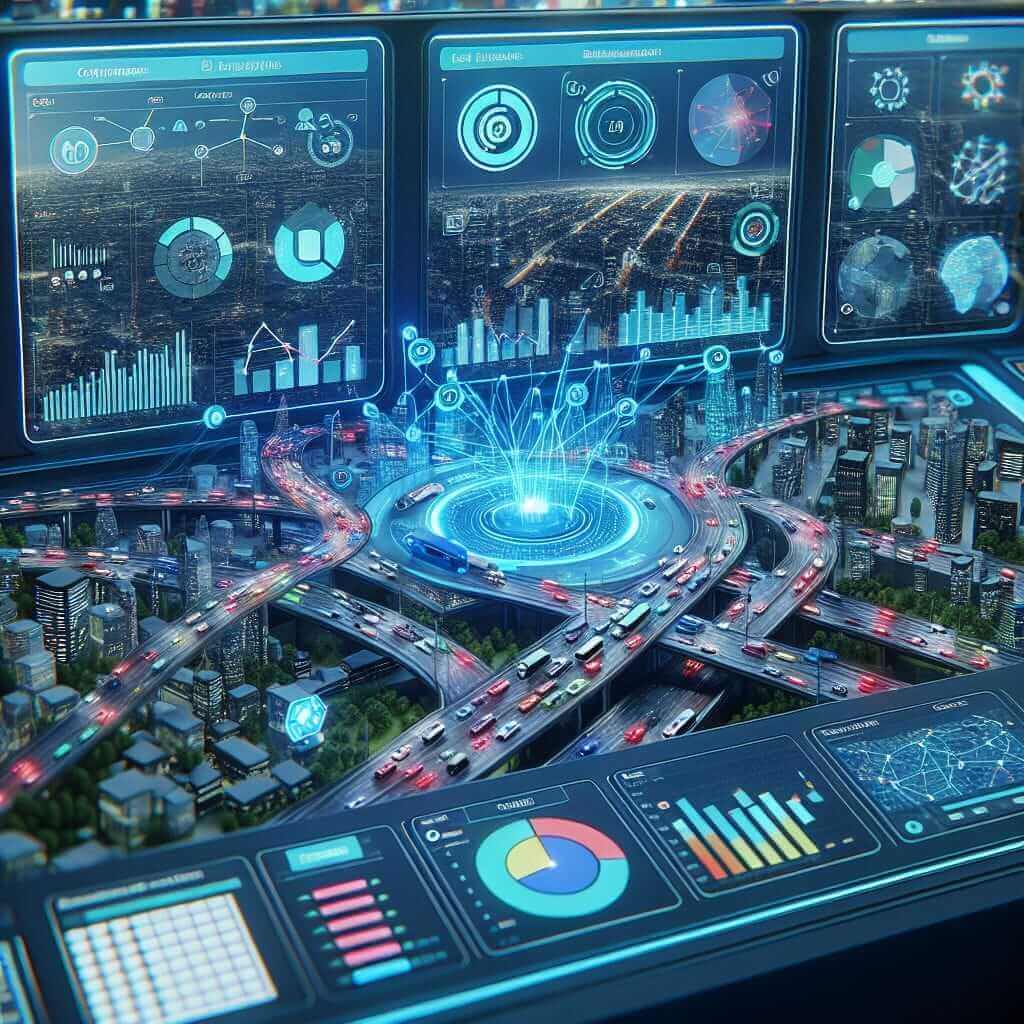The integration of Artificial Intelligence (AI) into various sectors is rapidly transforming our world, and public transportation is no exception. This topic frequently appears in IELTS Writing Task 2, prompting candidates to analyze and discuss the potential benefits and drawbacks of using AI to improve public transportation systems.
Here are some potential essay prompts related to this topic:
- To what extent do you agree or disagree that AI is the key to solving the problems faced by public transportation systems worldwide?
- Discuss the advantages and disadvantages of using AI to manage traffic flow and optimize public transportation routes.
- Some people believe that the use of autonomous vehicles in public transportation is inevitable. Others argue that human drivers will always be necessary. Discuss both views and give your opinion.
Sample Essay: AI and Traffic Management
Let’s choose the second prompt for our sample essay:
Discuss the advantages and disadvantages of using AI to manage traffic flow and optimize public transportation routes.
Analysis
This essay requires a balanced discussion, exploring both the positive and negative aspects of utilizing AI for traffic management. We need to consider how AI can be advantageous, for instance, in optimizing routes and reducing congestion, while also acknowledging potential drawbacks such as job displacement and ethical concerns.
Essay
The increasing strain on urban infrastructure due to population growth and traffic congestion demands innovative solutions. In response, many cities are turning towards Artificial Intelligence (AI) to revolutionize traffic management and optimize public transportation routes. While the potential benefits are undeniable, careful consideration must be given to the potential drawbacks as well.
One of the most significant advantages of AI-powered traffic management is its ability to analyze vast amounts of real-time data, including traffic volume, road conditions, and even weather patterns. This allows for dynamic route optimization, reducing travel times for commuters and improving the overall efficiency of public transportation systems. For instance, AI algorithms can adjust traffic signal timing based on real-time traffic flow, minimizing congestion and delays. Furthermore, by predicting potential traffic bottlenecks, AI can proactively reroute buses and trains, ensuring smoother journeys for passengers.

However, the implementation of AI in traffic management is not without its challenges. One major concern is the potential for job displacement, as AI systems could potentially replace human traffic controllers and dispatchers. This could lead to unemployment and economic hardship for those individuals. Additionally, there are ethical considerations surrounding data privacy and security. AI systems rely heavily on collecting and analyzing personal data, raising concerns about potential misuse or unauthorized access to sensitive information.
In conclusion, while the use of AI to manage traffic flow and optimize public transportation routes offers tremendous potential for improving efficiency and reducing congestion, it is crucial to address the potential drawbacks. Governments and urban planners must prioritize retraining and reskilling programs for displaced workers and implement robust data protection measures to mitigate ethical concerns. With careful planning and implementation, AI can undoubtedly revolutionize public transportation, creating more efficient and sustainable urban environments for the future. (Word count: 320)
Notes
- Vocabulary: The essay utilizes topic-specific vocabulary such as “urban infrastructure,” “traffic congestion,” “dynamic route optimization,” “traffic bottlenecks,” and “data privacy.”
- Grammar: The essay demonstrates a variety of grammatical structures, including complex sentences, passive voice, and conditional clauses.
- Coherence and Cohesion: The essay flows smoothly with clear topic sentences, linking words, and cohesive devices.
Vocabulary
- Congestion (noun) /kənˈdʒes.tʃən/: The state of being overcrowded, especially with traffic.
- Optimize (verb) /ˈɒp.tɪ.maɪz/: Make the best or most effective use of (a situation, opportunity, or resource).
- Dynamic (adjective) /daɪˈnæm.ɪk/: Characterized by constant change, activity, or progress.
- Proactive (adjective) /ˌprəʊˈæk.tɪv/: Creating or controlling a situation by causing something to happen rather than responding to it after it has happened.
- Bottleneck (noun) /ˈbɒt.əl.nek/: A situation that causes delay in a process.
- Displacement (noun) /dɪˈspleɪs.mənt/: The act of forcing someone or something out of its usual or original position.
- Ethical (adjective) /ˈeθ.ɪ.kəl/: Relating to moral principles or the branch of knowledge dealing with these.
- Mitigate (verb) /ˈmɪt.ɪ.ɡeɪt/: Make (something bad) less severe, serious, or painful.
- Robust (adjective) /rəʊˈbʌst/: Strong and healthy; vigorous.
- Sustainable (adjective) /səˈsteɪ.nə.bəl/: Able to be maintained at a certain rate or level.
Conclusion
This guide has provided a comprehensive overview of how to approach an IELTS Writing Task 2 essay on the topic of AI in public transportation. By understanding the key concepts, utilizing relevant vocabulary, and structuring your essay effectively, you can effectively communicate your ideas and achieve a high band score. Remember to practice writing essays on a variety of related topics to further enhance your skills and confidence. Good luck!